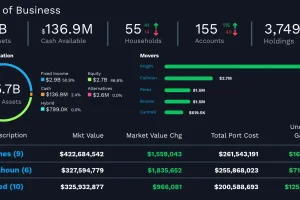Student loans are an integral component of financing higher education, yet rising debt levels and defaults have raised questions about our current model’s sustainability. Some experts advocate increased state investments or more stringent underwriting of student loans in order to help students acquire skills that they’ll need in their careers after graduating.
Alternatives to student loans may include scholarships, work-study and grants. Students should always explore these possibilities before opting for loans.
Federal Funding
Government funding for students comes in the form of grants, scholarships and student loans from both state governments as well as the federal government – with investments increasing even as state support has decreased.
These increases include an expansion of the Pell Grant program, one of the primary sources of need-based financial aid. Unlike private loan programs, federal student loans do not impose formal credit evaluation requirements and thus make federal student loans accessible to all eligible students.
federal student loans offer other perks as well, including loan forgiveness for teachers in low-income areas or certain government and nonprofit jobs for ten total years. To begin their journey to federal funding, students should fill out the Free Application for Federal Student Aid (FAFSA), as this requirement for most schools to award federal funding.
State Funding
State funding of higher education typically comes in the form of grants, scholarships and work-study programs from states. These gifts do not need to be repaid and typically focus on financial need or merit such as high grades or exceptional athletic ability in a sport. Loans on the other hand must be repaid with interest; these will have different repayment terms as well as fees associated with them that will differ depending on each program.
Over the past several decades, rising tuition has forced families to cover an ever increasing portion of college costs themselves, potentially leaving them saddled with debt or unable to attend at all. This trend threatens both individual students and their families as well as entire communities and states which rely on educated workforces for growth and expansion.
Each state offers its own set of student loan programs with specific eligibility requirements. To find out what’s available in your state, reach out to your educational agency or conduct a search online using “state student loans” + your state name.
Private Funding
Private loans typically feature variable interest rates tied to either LIBOR or PRIME financial rates and/or creditworthiness; typically higher than federal loan rates. Before borrowing private student loans, students should carefully consider other funding alternatives like grants and scholarships as well as college savings accounts as potential solutions.
When considering private loans as an option for funding needs, all other possible funding solutions should first have been exhausted. When pursuing private loans it’s wise to be wary of lenders offering attractively low interest rates that don’t apply to those with poor credit, and pay close attention to each lender’s terms and conditions of loaning money.
Private loans must be approved by both the borrower’s school and lender and will usually be disbursed directly into their student accounts. Students can choose whether or not to make payments during school (interest only payments) or defer repayment until after graduation; many private lenders allow cosigners, which increases chances for better terms.
Other Funding
Students may qualify for other forms of financial aid, such as scholarships and grants. Grants such as the Federal Supplemental Educational Opportunity Grant are based on student financial need and administered through schools; scholarship opportunities like Alfond Leaders Student Debt Reduction Scholarship can also provide extra support based on academic achievement or other criteria.
Once students have exhausted all available free college funding options, they can take out federal loans – both subsidized and unsubsidized – to cover any outstanding costs. It’s important to first do their math. “Try to come up with an approximate figure for how much tuition, room and board, books, supplies and transportation will cost,” Green recommends.
Students can compare this number with the aid they will receive from their schools, as well as payment plans offered by school billing offices (also called bursar’s or cashier’s offices) that will spread costs evenly over a semester and avoid late fees.





